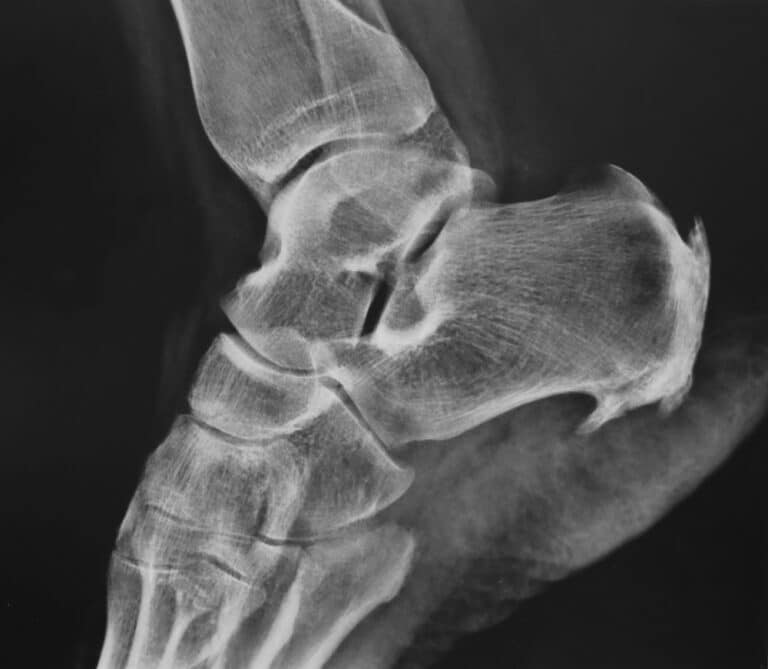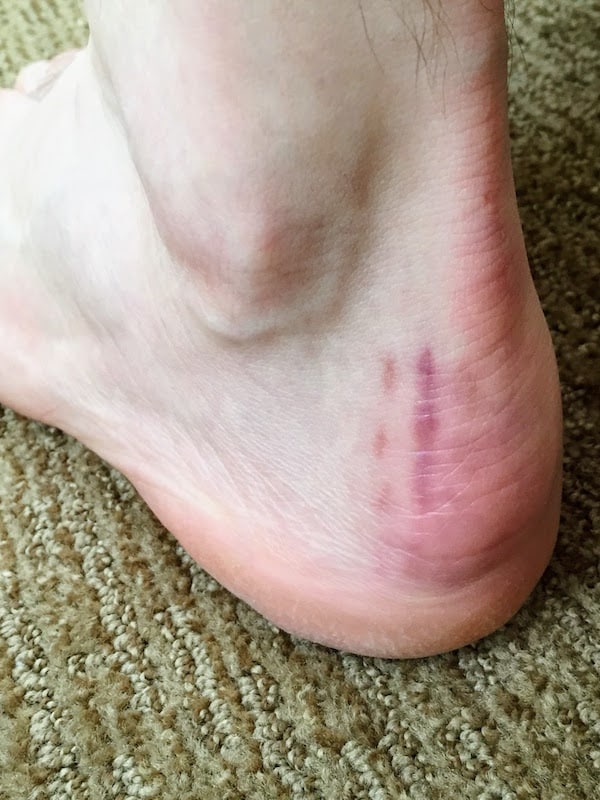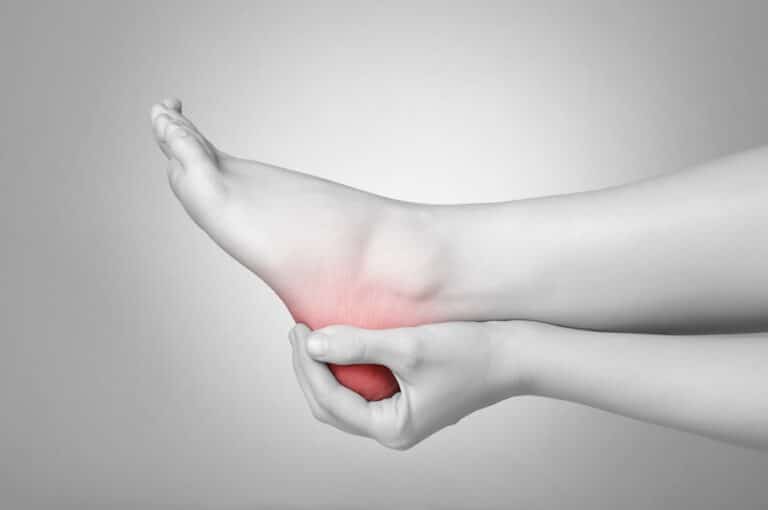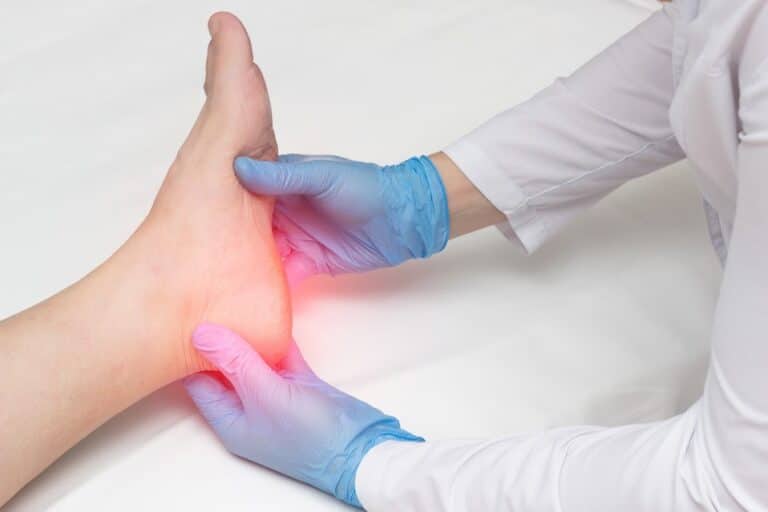Yes, a bunion cause knee pain. Although bunions primarily affect the big toe joint, they can also lead to changes in foot mechanics and alignment. These changes can affect the way you walk and distribute weight on your feet, potentially causing altered biomechanics and increased stress on other joints, such as the knees. Over time, this increased stress can contribute to knee pain and discomfort.
It’s important to note that not everyone with a bunion will experience knee pain, as individual factors and the severity of the bunion can vary. If you’re experiencing knee pain and suspect it may be related to your bunion, it’s advisable to consult with a healthcare professional for a proper evaluation and appropriate treatment.
Understanding the Link between Bunions and Knee Pain
Bunions, which are bony protrusions that develop at the base of the big toe, can be linked to knee pain. The connection lies in the way bunions affect foot mechanics. As the bunion progresses, it can cause the foot to become misaligned, altering the distribution of weight and putting additional stress on the knees.
When the foot is misaligned, it can affect the natural walking gait and lead to abnormal forces being placed on the knee joints. Over time, this can result in knee pain, inflammation, and discomfort. Additionally, changes in foot mechanics can disrupt the normal alignment of the leg, leading to imbalances and further contributing to knee problems.
It’s important to note that not everyone with bunions will experience knee pain, as individual factors and the severity of the bunion can vary. However, if you have bunions and are experiencing knee pain, it’s advisable to consult with a healthcare professional.
Exploring the Anatomy of a Bunion and Its Impact on the Knee
A bunion, medically known as hallux valgus, is a deformity that affects the joint at the base of the big toe. It is characterized by the protrusion of the big toe towards the other toes, causing a bony bump to develop on the side of the foot. While the primary impact of a bunion is on the foot, it can also have secondary effects on the knee.

The misalignment caused by a bunion can disrupt the normal biomechanics of the foot and alter the distribution of forces during walking or running. As a result, excessive pressure can be placed on the inner side of the foot, causing it to roll inward (pronation). This inward rolling can lead to an abnormal alignment of the leg, affecting the knee joint.
The altered foot mechanics and leg alignment associated with a bunion can cause the knee to experience increased stress and strain. Over time, this can contribute to the development of knee pain, inflammation, and discomfort. The knee joint may be subjected to abnormal forces and wear and tear, potentially leading to conditions such as patellofemoral pain syndrome or osteoarthritis.
Common Symptoms: How Bunions and Knee Pain Interrelate
The interrelation between bunions and knee pain can manifest through common symptoms experienced by individuals. Here are some of the typical symptoms that can occur:
- Bunion Pain: The primary symptom of a bunion is pain and discomfort at the base of the big toe. This pain can radiate to the surrounding areas, including the foot and the knee.
- Foot Misalignment: Bunions can cause the big toe to push against the other toes, resulting in a misalignment of the foot. This misalignment can affect the distribution of weight and increase stress on the knee joint.
- Knee Pain: Individuals with bunions may experience knee pain due to the altered mechanics and pressure on the knee joint. The pain can vary from mild discomfort to sharp or throbbing sensations.
- Swelling and Inflammation: Both bunions and knee pain can lead to swelling and inflammation in the affected areas. This can further contribute to discomfort and limited mobility.
- Difficulty Walking: As bunions progress and knee pain worsens, individuals may experience difficulty with walking, especially during activities that involve prolonged standing or walking.
It is essential to note that not all individuals with bunions will experience knee pain, and the severity of symptoms can vary.
Identifying the Root Cause: Bunions or Other Factors?
Identifying the root cause of knee pain in relation to bunions involves considering various factors. While bunions can contribute to knee pain, it’s important to determine if other factors may also be involved. Here are key points to consider:
- Bunion-related Mechanics: Bunions can affect the alignment and mechanics of the foot, potentially leading to changes in gait and foot function. These alterations can result in increased stress on the knee joint, potentially causing or exacerbating knee pain.
- Structural Abnormalities: In some cases, structural abnormalities or imbalances in the lower body, such as leg length discrepancies or overpronation, can contribute to both bunions and knee pain. Addressing these underlying issues may be necessary to alleviate knee discomfort.
- Arthritis or Joint Degeneration: Bunions can coexist with conditions like osteoarthritis or rheumatoid arthritis, which may cause knee pain independently. It’s crucial to consider these underlying conditions when assessing the cause of knee pain.
- Muscle Imbalances: Weak or imbalanced muscles in the feet, legs, or hips can impact the alignment and function of the lower body, potentially leading to knee pain. Addressing muscle imbalances through targeted exercises and physical therapy may be beneficial.
- Individual Variations: Each person’s body is unique, and factors such as genetics, lifestyle, and overall health can influence the relationship between bunions and knee pain. A comprehensive evaluation by a healthcare professional can help determine the individual factors at play.
It’s important to consult with a healthcare provider or orthopedic specialist for a thorough examination and diagnosis. They can assess your specific condition, identify contributing factors, and develop an appropriate treatment plan to address both bunions and knee pain effectively.
When to Seek Medical Attention: Signs and Red Flags
Knowing when to seek medical attention for bunion-related knee pain is important to ensure proper diagnosis and timely treatment. Here are some signs and red flags that may indicate the need for medical attention:
- Persistent or Severe Pain: If the knee pain caused by the bunion persists or becomes increasingly severe despite self-care measures, it’s advisable to consult a healthcare professional for a thorough evaluation.
- Limited Mobility or Function: If the knee pain significantly limits your ability to perform daily activities or affects your overall mobility, seeking medical attention is recommended.
- Swelling, Redness, or Warmth: If the knee joint becomes swollen, red, or warm to the touch, it may indicate inflammation or infection, and medical evaluation should be sought.
- Difficulty Bearing Weight: If you experience difficulty or inability to bear weight on the affected leg or knee, it may indicate a more severe problem that requires medical assessment.
- Instability or Locking Sensations: If you have feelings of knee instability, such as giving way or buckling, or if you experience locking sensations in the knee joint, it’s important to have it assessed by a healthcare professional.
- Worsening Symptoms: If your bunion-related knee pain progressively worsens over time or if you notice additional symptoms such as numbness, tingling, or weakness, it’s advisable to seek medical attention for a proper evaluation.

Remember, the severity and progression of symptoms can vary among individuals. If you have concerns about your bunion-related knee pain, it’s always best to consult with a healthcare professional who can provide an accurate diagnosis and recommend appropriate treatment options.
Treating Bunion-Related Knee Pain: Effective Strategies
Treating bunion-related knee pain involves addressing both the underlying bunion condition and the associated knee discomfort. Some effective strategies for alleviating bunion-related knee pain include modifying footwear to provide better support and alleviate pressure on the bunion, using orthotic devices or shoe inserts to improve foot mechanics and reduce knee pain, engaging in physical therapy to strengthen muscles around the knee and improve flexibility.
Considering the use of medications like nonsteroidal anti-inflammatory drugs (NSAIDs) to reduce pain and inflammation, applying ice packs or using heat therapy to alleviate pain and swelling in the knee area, utilizing assistive devices like crutches or knee braces for support and offloading the knee joint, and exploring appropriate bunion treatment options, including conservative measures or surgical intervention if necessary. It is essential to consult with a healthcare professional or specialist for personalized recommendations and guidance based on your specific condition and symptoms.
Footwear Choices: Optimal Support for Bunion and Knee Health
Choosing the right footwear is crucial for maintaining optimal support and promoting the health of both bunions and knees. Consider the following tips when selecting shoes:
- Wide Toe Box: Look for shoes with a spacious toe box that allows your toes to spread naturally. This helps reduce pressure on the bunion and promotes proper alignment, alleviating knee pain.
- Low Heel or Flat Shoes: Opt for shoes with a low heel or no heel at all. High heels can increase pressure on the toes and exacerbate bunion discomfort, leading to knee pain.
- Arch Support: Ensure that the shoes provide adequate arch support. This helps distribute weight evenly and maintains proper foot alignment, reducing stress on the bunions and knees.
- Cushioning and Shock Absorption: Look for shoes with ample cushioning and shock absorption in the soles. These features help minimize the impact on the feet and knees, providing added comfort and protection.
- Stability and Motion Control: Consider shoes with features like firm midsoles and sturdy outsoles to enhance stability and control excessive foot motion. This helps reduce strain on the bunions and knee joints.
- Adjustable Straps or Laces: Opt for shoes with adjustable straps or laces to ensure a secure and customized fit. This allows for better support and accommodates any swelling or changes in foot size.
- Comfort and Proper Sizing: Prioritize comfort and choose shoes that fit well. Avoid shoes that are too tight or narrow, as they can compress the bunion and lead to knee pain. Proper sizing ensures adequate space for the toes and overall foot comfort.
Remember to try on shoes and walk around in them before purchasing to assess comfort and fit. Consulting with a podiatrist or footwear specialist can also provide valuable guidance in selecting the right shoes for your specific foot and knee needs.
References:
Bunion Surgery Miami. (n.d.). Toe Lengthening for Brachymetatarsia. Retrieved from https://bunionsurgerymiami.com/toe-lengthening-brachymetatarsia/




